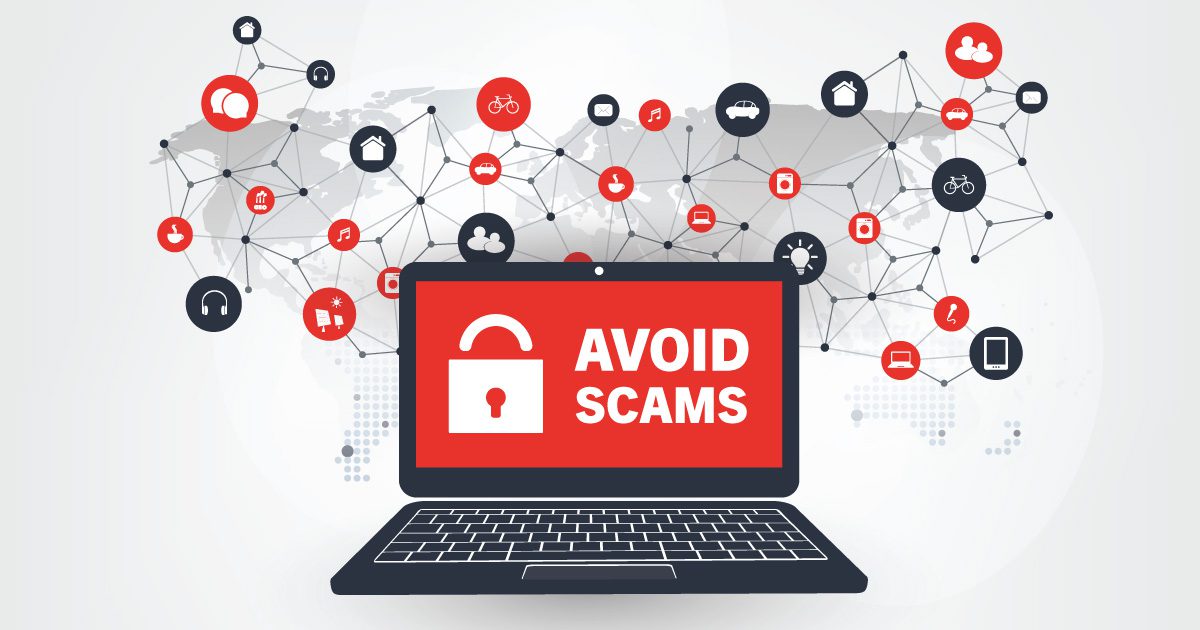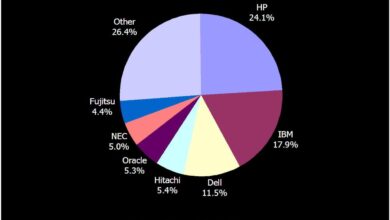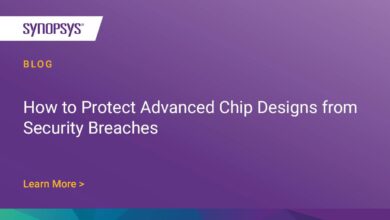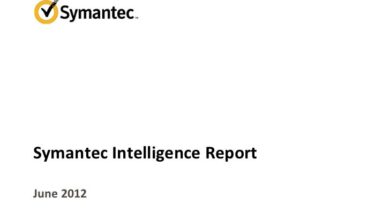Avoiding Internal and External IT Scams
Avoiding internal and external IT scams is crucial in today’s digital landscape. This guide dives deep into the world of cyber threats, exploring both internal and external tactics used by malicious actors. We’ll examine various types of scams, including phishing, pretexting, and social engineering, and offer practical strategies to prevent them.
From understanding the motivations and techniques of attackers to implementing robust security measures and developing incident response plans, this comprehensive resource equips you with the knowledge to safeguard your organization’s sensitive data and systems.
Understanding Internal IT Scams: Avoiding Internal And External It Scams

Internal IT scams, often more insidious than external attacks, exploit the trust within an organization. These scams leverage human psychology and social dynamics to manipulate employees into revealing sensitive information or performing actions that compromise the company’s security. Understanding the various tactics and characteristics of these scams is crucial for employees and IT departments alike to implement effective preventative measures.Internal IT scams target the vulnerabilities within a company’s network, often by deceiving employees who might not be fully aware of the dangers.
These scams often rely on the trust and relationships within the organization to gain access to sensitive data or systems. Recognizing the patterns and tactics used in these scams is vital for employees and IT teams to safeguard their organization from significant losses.
Phishing and Pretexting Tactics
Internal phishing attempts mimic legitimate communication, such as emails, instant messages, or phone calls. These messages often create a sense of urgency or authority to trick the recipient into clicking on malicious links or revealing credentials. Pretexting involves creating a false scenario to gain access to information. A scammer might pose as a manager, a technical support representative, or another trusted figure to trick an employee into divulging sensitive data.
Social Engineering Tactics
Social engineering goes beyond simple phishing or pretexting. It uses psychological manipulation to influence an employee’s behavior. This can include emotional manipulation, where the scammer plays on an employee’s fear, guilt, or desire for recognition. Scammers may also use flattery or other techniques to build rapport and trust, making the victim more likely to comply with their requests.
In some cases, scammers exploit the employee’s sense of obligation or duty.
Common Characteristics of Internal IT Scams
Internal IT scams often share common characteristics. A sense of urgency is frequently used to pressure the victim into acting quickly without thinking. Scammers may also impersonate someone in authority, leveraging the victim’s respect for their position. Emotional manipulation is another common tactic, exploiting fears, anxieties, or desires to coerce the victim into compliance.
Roles and Responsibilities in Prevention
All employees play a crucial role in preventing internal IT scams. They must be vigilant about suspicious communications and requests, verifying the identity of the sender and the legitimacy of the request before acting. IT departments should implement and enforce strong security policies and awareness training programs to educate employees about the risks. Management should also communicate the importance of security and provide clear guidelines on how to handle suspicious communications.
Importance of Strong Internal Controls and Procedures
Robust internal controls and procedures are essential for safeguarding sensitive data and systems. Strong passwords, multi-factor authentication, and access controls can limit the damage caused by compromised accounts. Regular security awareness training helps employees recognize and avoid common scams. Regular audits and reviews of security practices are critical to ensure effectiveness.
Comparison of Internal IT Scams
| Type of Scam | Examples | Techniques Used | Impact |
|---|---|---|---|
| Phishing | Fake email from the CEO requesting urgent wire transfer | Creating urgency, impersonating authority | Financial loss, data breach |
| Pretexting | A scammer posing as a technician needing access to a server room | Creating a false scenario, leveraging trust | Data compromise, system disruption |
| Social Engineering | A scammer gaining access to a building by exploiting an employee’s willingness to help | Emotional manipulation, building rapport | Physical access to systems, data breaches |
Understanding External IT Scams
External IT scams pose a significant threat to individuals and organizations alike. These scams, often employing sophisticated techniques, can lead to significant financial losses, data breaches, and reputational damage. Understanding the various types of external IT scams, the methods attackers use, and the warning signs is crucial for protecting yourself and your business. This discussion will explore the intricacies of external IT scams, focusing on phishing, malware, and ransomware attacks.
Common External IT Scam Methods
External IT scams frequently leverage clever tactics to trick victims. Attackers employ social engineering techniques, exploiting human psychology to manipulate individuals into revealing sensitive information or clicking malicious links. Spoofing, a method of masking the true identity of a sender or website, is also a common tool used in external IT scams. Vulnerabilities in software and systems are exploited to gain unauthorized access and deliver malicious payloads.
Staying vigilant against internal and external IT scams is crucial, especially with recent news about Microsoft patching a new vulnerability worm, as detailed in this article: microsoft patches new vulnerability worm expected. This highlights the importance of robust security measures, whether it’s training employees to spot phishing attempts or keeping software updated to prevent exploitation. So, keep those defenses up to date to protect your systems from potential threats.
Phishing Attacks
Phishing attacks are a prevalent form of external IT scam, aiming to trick individuals into revealing sensitive information like usernames, passwords, credit card details, and social security numbers. These attacks often involve impersonating legitimate organizations or individuals through deceptive emails, websites, or messages. A common phishing tactic is creating fake websites that mimic legitimate banking or e-commerce sites.
Victims are enticed to enter their credentials, unknowingly handing over their data to attackers.
Malware Attacks
Malware attacks involve installing malicious software on a victim’s system without their knowledge or consent. This software can range from viruses and worms that replicate and spread to ransomware that encrypts files and demands payment for their release. Malware can be delivered through various methods, including malicious attachments in emails, infected websites, or compromised software downloads. One common method is exploiting vulnerabilities in software to install malware remotely.
Ransomware Attacks
Ransomware attacks are a type of malware attack that encrypts a victim’s files, rendering them inaccessible. The attackers then demand a ransom in exchange for the decryption key. Ransomware can be delivered through phishing emails, malicious websites, or exploiting vulnerabilities in software. The motivations behind ransomware attacks often involve financial gain, but they can also be used for extortion or political purposes.
Red Flags and Warning Signs
Recognizing red flags and warning signs is crucial in avoiding external IT scams. Suspicious emails with poor grammar, unusual requests, or urgent tones are common red flags. Websites with poor security or a suspicious layout should be avoided. Unusual activity on your accounts, such as unexpected charges or login attempts, should be investigated immediately. Impersonating a legitimate company or individual through fraudulent means should raise immediate suspicion.
Motivations of Attackers
Attackers’ motivations vary depending on the type of external IT scam. Phishing attacks are often motivated by financial gain, stealing personal information for identity theft or credit card fraud. Malware attacks can have various motivations, from financial gain to data theft or sabotage. Ransomware attacks are often driven by financial gain, demanding payment to restore access to encrypted data.
Table of External IT Scams
| Type of Scam | Examples | Tactics | Potential Consequences |
|---|---|---|---|
| Phishing | Fake emails, spoofed websites | Impersonation, social engineering, urgency | Identity theft, financial loss, data breaches |
| Malware | Viruses, worms, ransomware | Exploiting vulnerabilities, malicious attachments | Data loss, system damage, financial loss, operational disruption |
| Ransomware | CryptoLocker, WannaCry | File encryption, ransom demands | Data loss, significant financial costs, business disruption |
Preventing Internal IT Scams
Internal IT scams, perpetrated by individuals within an organization, pose a significant threat to data security and operational stability. These scams often exploit trust and access privileges to gain unauthorized access, leading to financial losses, reputational damage, and legal ramifications. Understanding the tactics employed by internal perpetrators is crucial in developing robust preventative measures.Internal IT scams are often more insidious than external attacks because the perpetrators already have access to systems and information.
This makes detection more challenging, and prevention becomes even more critical. Building a culture of security awareness, coupled with strong security protocols, is essential to mitigate the risk.
Robust Employee Training Program
A comprehensive training program is fundamental to preventing internal IT scams. Employees need to be educated about the various types of scams, including phishing, pretexting, and quid pro quo schemes. The training should cover the specific risks relevant to the organization, highlighting the potential consequences of falling victim to such schemes. Examples of common internal scams should be presented to illustrate the methods and tactics used.
Simulated phishing attacks can be employed to test employee awareness and reinforce learning.
Strong Authentication Measures
Implementing strong authentication measures, particularly multi-factor authentication (MFA), is crucial. MFA adds an extra layer of security by requiring more than one form of verification. This can include something the user knows (password), something the user has (security token), or something the user is (biometric data). The use of MFA significantly reduces the risk of unauthorized access, even if a password is compromised.
This layered approach significantly strengthens the security posture against internal threats.
Staying safe online, especially from internal and external IT scams, is crucial. While the internet is evolving with exciting developments like the future of internet protocol, IPv6, poised for adoption ( internet protocol for the future ipv6 poised for adoption ), we shouldn’t forget the importance of vigilance in protecting ourselves from phishing attempts and other malicious activities.
Strong passwords and cautious clicking habits are still vital in this rapidly changing digital landscape.
Secure Communication Protocols
Establishing and adhering to secure communication protocols is essential. This includes using encrypted channels for sensitive information, restricting access to confidential data, and implementing strict policies for data handling and storage. Employees should be trained to recognize suspicious emails, phone calls, or messages. Clear guidelines on acceptable use of company resources and communication channels should be clearly communicated and reinforced.
Examples of these protocols should be highlighted.
Reporting Suspicious Activities
Creating a clear reporting procedure is vital. Employees should be empowered to report suspicious activities without fear of reprisal. This includes establishing a dedicated reporting channel, such as a dedicated email address or a secure online portal. The reporting procedure should be transparent and clearly defined, outlining the steps involved in escalating concerns to the appropriate authorities.
Employees should know who to contact and how to escalate their concerns to senior management.
Handling Suspected Internal IT Scams
A well-defined procedure for handling suspected internal IT scams is critical. This procedure should include steps for isolating affected systems or accounts, preventing further damage, and initiating a thorough investigation. A detailed incident response plan should be in place.
Incident Response Flowchart
+-----------------------------------+ | Suspicious Activity Reported | +-----------------------------------+ | |-> Report to IT Security | +-----------------------------------+ | |-> Isolate Affected Systems | +-----------------------------------+ | |-> Initiate Investigation | +-----------------------------------+ | |-> Interview Suspected Parties | +-----------------------------------+ | |-> Review Logs & Data | +-----------------------------------+ | |-> Assess Impact & Remediation | +-----------------------------------+ | |-> Document & Report Findings | +-----------------------------------+ | |-> Implement Corrective Actions | +-----------------------------------+ | |-> Training for Affected Parties | +-----------------------------------+ | |-> Review & Update Procedures | +-----------------------------------+
Preventing External IT Scams
External IT scams, often disguised as legitimate communications, pose a significant threat to organizations.
These scams exploit vulnerabilities in employee awareness and security protocols. Effective prevention strategies are crucial to mitigating risks and safeguarding sensitive data. A multi-layered approach, combining robust security measures with employee education, is essential for a strong defense.
The rise of sophisticated phishing attacks and other online scams necessitates proactive measures to protect against external threats. Employees are often the first line of defense against these scams, making comprehensive training programs critical. Implementing advanced security technologies and adhering to secure practices can significantly reduce the likelihood of successful attacks.
Strengthening Security Awareness Training
Effective security awareness training is paramount in equipping employees to recognize and avoid external IT scams. Training should cover various tactics used in social engineering attacks. This includes recognizing phishing emails, malicious websites, and suspicious phone calls. Interactive exercises and real-world scenarios can enhance learning and retention. Regular updates to the training materials are necessary to address emerging threats and techniques.
Implementing Robust Security Measures
Implementing robust security measures is essential to deter and detect external threats. Firewalls act as the first line of defense, controlling network traffic and blocking unauthorized access. Intrusion detection systems (IDS) continuously monitor network activity for suspicious patterns and anomalies. These systems can alert security personnel to potential breaches, allowing for swift response and mitigation. A layered approach combining firewalls and IDS significantly enhances overall security posture.
Secure Email Practices
Secure email practices are critical in combating phishing attacks. Implementing email filtering solutions can identify and block suspicious emails containing malicious links or attachments. Enforcing sender authentication mechanisms, such as DomainKeys Identified Mail (DKIM), helps verify the legitimacy of emails. Training employees to critically evaluate sender information, scrutinize email content, and report suspicious emails to IT is also vital.
Creating Strong Passwords and Managing Accounts Securely
Creating strong passwords and managing accounts securely is a critical aspect of external IT scam prevention. Strong passwords should be unique, complex, and regularly changed. Multi-factor authentication (MFA) adds an extra layer of security by requiring multiple verification methods. Employees should be encouraged to avoid using the same password across multiple accounts. Regular account reviews and monitoring can help detect unauthorized access attempts.
Comparing and Contrasting Approaches to External IT Scam Prevention
Different approaches to external IT scam prevention offer varying levels of protection and have unique strengths and weaknesses. While security awareness training empowers employees to recognize scams, robust security measures provide a technical barrier against malicious activity. A comprehensive approach combining both training and technology is generally the most effective. Training can mitigate the impact of scams, while technology can prevent them from reaching employees.
For example, a combination of email filtering and employee training is often more effective than either approach alone.
Security Measures Effectiveness and Implementation, Avoiding internal and external it scams
| Security Measure | Effectiveness | Implementation Steps |
|---|---|---|
| Security Awareness Training | High – Empowers employees to recognize scams | Develop a comprehensive training program, Conduct regular refresher courses, Include interactive exercises and real-world scenarios |
| Firewalls | High – Blocks unauthorized access | Configure firewall rules to block known malicious IP addresses, Implement stateful inspection, Regularly update firewall rules |
| Intrusion Detection Systems (IDS) | High – Detects suspicious activity | Configure IDS rules to detect known malicious patterns, Regularly update IDS signatures, Monitor IDS logs for alerts |
| Email Filtering | Moderate – Reduces phishing attempts | Implement spam filters, Configure email authentication protocols, Regularly review and update filtering rules |
| Strong Passwords and MFA | High – Adds an extra layer of security | Develop password policies, Enforce MFA for all accounts, Train employees on password management best practices |
Protecting Sensitive Data
Protecting sensitive data is paramount in today’s digital landscape. A robust security strategy encompassing encryption, access controls, and secure disposal procedures is crucial for mitigating risks and maintaining compliance. Breaches can lead to significant financial losses, reputational damage, and legal repercussions. This section delves into best practices for safeguarding sensitive information, from identification and classification to secure handling and disposal.
Importance of Data Encryption and Access Controls
Data encryption and robust access controls are fundamental to protecting sensitive data. Encryption transforms data into an unreadable format, rendering it unusable to unauthorized individuals. This is particularly critical for data in transit and at rest. Access controls, including strong passwords, multi-factor authentication, and role-based permissions, restrict access to sensitive information based on the user’s needs and privileges.
This layered approach minimizes the risk of unauthorized access and data breaches. Properly implemented encryption and access controls significantly enhance data security.
Procedures for Handling and Disposing of Sensitive Information
Establishing clear procedures for handling and disposing of sensitive information is vital. This includes secure storage, controlled access, and secure destruction methods. Data should be stored in secure facilities with limited access and physical security measures. Secure disposal methods, such as shredding, degaussing, or secure data erasure software, are essential to prevent data recovery. These procedures should be documented and regularly reviewed and updated to ensure they remain effective.
Different Types of Sensitive Data and Their Specific Security Requirements
Different types of data have varying sensitivity levels and require tailored security measures. Financial data, personally identifiable information (PII), intellectual property, and health information are examples of highly sensitive data requiring stringent protection. Identifying the sensitivity level of each data type is crucial in establishing appropriate security controls. Understanding the potential impact of a data breach is essential for determining the appropriate security controls.
Checklist for Assessing and Improving Data Security Practices
A comprehensive checklist for assessing and improving data security practices can be a valuable tool. This checklist should cover areas such as data classification, encryption protocols, access controls, incident response plans, and regular security audits. Regularly evaluating and updating data security practices are essential for maintaining a strong security posture. A checklist provides a structured approach to identifying potential weaknesses and implementing improvements.
Best Practices for Protecting Sensitive Data During Transmission and Storage
Protecting sensitive data during transmission and storage involves a multifaceted approach. Using secure protocols for data transmission, such as HTTPS, is essential. Data at rest should be encrypted using strong encryption algorithms. Data loss prevention (DLP) tools can be used to detect and prevent sensitive data from leaving the organization’s control. Using secure storage facilities with physical security measures is also critical.
These measures prevent unauthorized access to sensitive data during transmission and storage.
Table of Data Types, Sensitivity Levels, and Appropriate Security Controls
| Data Type | Sensitivity Level | Appropriate Security Controls |
|---|---|---|
| Financial Data | High | Strong encryption, multi-factor authentication, secure access controls, regular audits |
| Personally Identifiable Information (PII) | High | Data anonymization, encryption, access controls, data minimization |
| Intellectual Property | High | Secure storage, access controls, watermarking, regular audits |
| Health Information | High | HIPAA compliance, encryption, secure storage, access controls |
| Customer Data | Medium | Strong passwords, multi-factor authentication, regular security awareness training |
| Operational Data | Low | Access controls, regular backups, monitoring |
Incident Response and Recovery
Responding to and recovering from an IT scam incident requires a well-defined procedure. A robust incident response plan is crucial for minimizing damage, mitigating future risks, and ensuring business continuity. This plan should address all aspects of the incident, from initial detection to final recovery. Effective incident response hinges on a structured approach, clear communication, and a commitment to learning from each event.
Incident Response Procedure
A structured incident response procedure ensures a coordinated and effective response to an IT scam. This procedure should be documented and regularly reviewed to maintain its effectiveness. The procedure should detail specific roles and responsibilities for each team member involved. A well-defined incident response plan helps in containing the damage, minimizing disruptions, and facilitating swift recovery.
Staying vigilant against internal and external IT scams is crucial. Protecting your systems from malicious actors requires constant awareness, especially when considering the recent debate surrounding critical IE flaws. For example, the recent discussion on bug reporting regarding these vulnerabilities highlights the importance of proactive security measures. This debate on critical IE flaws reminds us that staying ahead of potential threats is paramount to preventing both internal and external IT scams.
Strong security protocols and employee training are vital to mitigate risks.
Containing the Impact
Immediately containing the impact of an IT scam is critical. This involves isolating affected systems to prevent further data breaches or system compromise. This isolation prevents the spread of malware and protects unaffected resources. Network segmentation and immediate system shutdowns are crucial steps in containing the impact.
- Isolate Affected Systems: Immediately disconnect affected systems from the network to prevent the spread of malware or further data exfiltration. This action halts the propagation of the threat, protecting other systems. Examples include disconnecting compromised servers, workstations, and endpoints from the network.
- Contain the Threat: Employ security tools and techniques to limit the scope of the incident. This may include using firewalls to block malicious traffic, implementing intrusion detection systems, and employing anti-malware solutions. This step limits the extent of the damage.
- Secure Critical Data: Immediately secure any potentially compromised data. This includes implementing data loss prevention measures and securing backups. Ensuring the integrity of critical data is paramount.
Communication Protocols
Clear communication is essential during an IT scam incident. Effective communication protocols help maintain transparency and ensure everyone is informed of the situation. This includes notifying relevant stakeholders, internal and external.
- Notification Procedures: Establish clear notification procedures for stakeholders, including IT staff, management, legal counsel, and customers. This ensures timely and accurate communication regarding the incident.
- Communication Channels: Designate specific communication channels for updates and information dissemination. This might involve email, instant messaging, or dedicated communication platforms. Using multiple channels enhances the chances of reaching all stakeholders.
- Transparency: Maintain transparency with all affected parties throughout the incident response process. This includes providing regular updates and addressing concerns promptly.
Root Cause Analysis
Investigating the root cause of an IT scam incident is vital for preventing future incidents. A thorough investigation helps identify vulnerabilities and weaknesses in the security posture. This analysis should encompass the technical aspects of the attack and the human factors that may have contributed to it.
- Data Collection: Collect all relevant data, including logs, system information, and network traffic data. This comprehensive data collection forms the foundation of the investigation.
- Evidence Analysis: Analyze the collected data to identify the root cause of the incident. This may involve tracing the attack path, identifying vulnerabilities, and understanding the attacker’s methods. This methodical approach pinpoints the source of the problem.
- Vulnerability Assessment: Conduct a thorough vulnerability assessment to identify any weaknesses in the system that could be exploited in future attacks. This assessment identifies weaknesses and guides remediation efforts.
Mitigation Strategies
Implementing effective mitigation strategies is crucial for reducing the risk of future IT scam attacks. This includes enhancing security measures, training personnel, and improving incident response capabilities. These proactive measures significantly reduce the chances of future occurrences.
- Security Enhancements: Strengthen security controls and implement additional security measures, such as multi-factor authentication, robust firewalls, and intrusion detection systems. This strengthens the security posture against future threats.
- Employee Training: Conduct regular training programs for employees on recognizing and avoiding IT scams. This education empowers employees to identify and report suspicious activities. This approach strengthens the human element of security.
- Regular Audits: Perform regular security audits and assessments to identify and address any vulnerabilities. This proactive approach ensures a resilient security posture.
Incident Response Flowchart
[A visual flowchart illustrating the incident response and recovery process would be placed here. It would show the steps involved, from detection to recovery, in a clear and concise manner. It would include decision points, actions, and responsible parties.]
Staying Updated

Staying ahead of evolving IT scams is crucial for maintaining a secure digital environment. Cybercriminals constantly adapt their tactics, leveraging new technologies and vulnerabilities. To effectively protect your organization, it’s essential to remain vigilant and informed about the latest trends and techniques.
Staying informed about emerging IT scam techniques is a proactive measure against potential breaches. Knowing how scammers operate today provides valuable insight into how to anticipate and mitigate future attacks. This knowledge equips organizations with the tools to fortify their defenses and safeguard their sensitive data.
Importance of Staying Informed
Understanding current IT scam trends is vital for proactive defense. By recognizing new attack vectors and techniques, organizations can better prepare and implement security measures. This proactive approach is essential to avoid falling victim to sophisticated scams that leverage the latest technologies.
Resources for Staying Updated
Keeping abreast of the latest IT security best practices requires consistent effort. Numerous resources provide valuable insights into the ever-changing landscape of cyber threats. These resources offer a wealth of information and practical guidance, ensuring organizations can stay ahead of the curve.
- Industry Publications: Publications such as the SANS Institute’s Security Awareness Briefings, Threatpost, and Dark Reading offer comprehensive coverage of emerging threats, providing insights into the latest techniques and trends in IT security.
- Security Forums and Communities: Engaging with security forums and online communities allows professionals to share experiences, discuss emerging threats, and learn from experts. Active participation in these platforms provides a real-time understanding of security issues and solutions.
- Government Agencies: Government agencies like the Cybersecurity and Infrastructure Security Agency (CISA) and the National Institute of Standards and Technology (NIST) publish crucial resources, guidelines, and advisories on cybersecurity best practices and emerging threats.
- Security Conferences and Webinars: Attending security conferences and webinars allows you to learn from industry leaders and stay informed about the latest advancements in IT security. These events often showcase the latest trends and insights from professionals in the field.
Reliable Sources of Information
Trustworthy sources are essential for accurate and comprehensive information. Organizations should prioritize credible sources when seeking information about IT security threats and vulnerabilities. Reliable sources ensure the accuracy and relevance of the information, helping organizations make informed decisions about their security posture.
- Reputable Security Research Firms: Independent security research firms, such as FireEye, CrowdStrike, and Kaspersky, provide in-depth analysis of vulnerabilities and emerging threats, providing valuable insights into evolving cybercriminal tactics.
- Academic Institutions: Academic institutions often conduct research on cybersecurity, publishing findings and reports on emerging threats. These reports offer a deeper understanding of the underlying motivations and techniques of cybercriminals.
- Industry Certifications: Certifications like Certified Information Systems Security Professional (CISSP) and Certified Ethical Hacker (CEH) demonstrate a commitment to staying updated on the latest security trends and best practices.
Organizations and Resources
Numerous organizations offer guidance and support in the field of IT security. Understanding the resources available to organizations helps them effectively mitigate risks and maintain a secure environment.
| Organization | Focus |
|---|---|
| National Institute of Standards and Technology (NIST) | Provides standards and guidelines for IT security, including frameworks for risk management and incident response. |
| Cybersecurity and Infrastructure Security Agency (CISA) | Offers resources and guidance on protecting critical infrastructure and responding to cyber threats. |
| SANS Institute | Provides training, resources, and research on various IT security topics, including IT scams. |
| ISACA | Provides IT governance, risk management, and audit frameworks, helping organizations develop strong security policies. |
Final Thoughts
In conclusion, preventing internal and external IT scams requires a multifaceted approach. By combining strong security awareness training, robust security measures, and well-defined incident response protocols, organizations can significantly reduce their vulnerability to cyberattacks. Proactive measures and a commitment to ongoing learning are paramount in navigating the ever-evolving threat landscape.







